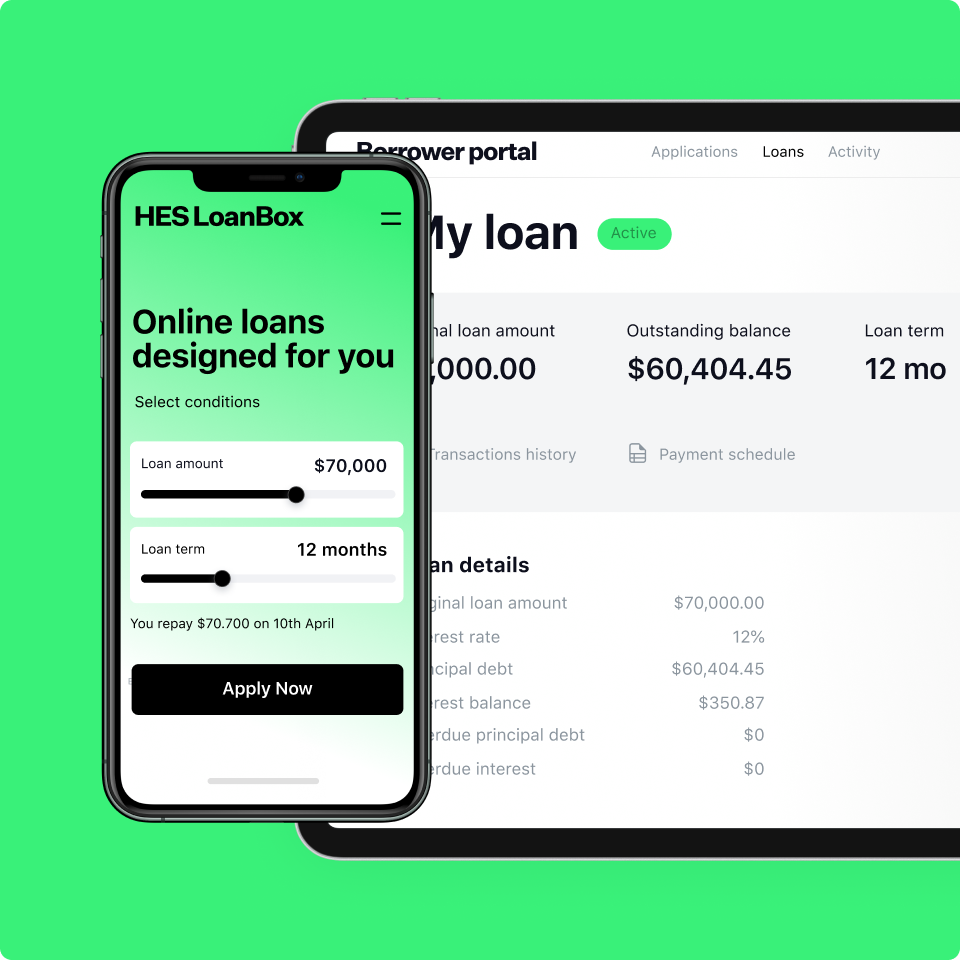Microfinance lending is a powerful financial tool that provides durable buffers against life’s setbacks. Another impactful role of microlending, especially in the post-pandemic recovery, is improving financial inclusion. Although a lot of financial service providers (FSPs) accepted the need to undergo digital transformation, many of them are still reliant on low-tech legacy software developed decades ago.
This article can help microfinance organizations find their individual digital ways to reach their customers and interact with them effectively and at a scale. Integrations with third-party data providers will help use data for credit management and product design. Microfinance software vendors also develop flexible core systems with high adaptability covering every aspect of their lending business and helping to build a digitally enabled business model.
Read also
Pros of Owning a Full-Featured Microfinance Lending Platform
- It reduces costs for financial institutions
- It increases the reach of financial products
- It facilitates innovation in the design of products and services
A digital online lending platform for microfinance businesses is configured to enhance customer experience by offering FSP managers real-time data for decision-making.
Financial institutions build their own acceptance criteria for client risk analysis, payment integrations, authentication, and personalization. Digital finance with updated micro financing software is potent to alter customer behavior for better and to grant instant access to products, interfaces, calculations, and convenient services.
Here is what you need to know to develop a microfinance lending platform:
Step 1: Business plan
Given that you have a clear idea of why your microfinance institution requires investment in technology, it’s time to work on the detailed plan. For example, if your main goal is to cut operational costs, consider planning the service price including all possible adjacencies, and then cost out a realistic investment in the microfinance lending platform.
Researching new business models can be a gamechanger. For example, mobile banking technology, data analytics in credit scoring, decision-making, and loan underwriting. Solutions based on Artificial Intelligence can match the long-term growth strategy. In a recent study by FIBR, BFA, and Mastercard Foundation there are several proofs why microfinance lending businesses can consider AI to cut costs and better manage risks.
Step 2: Flexible lending solution
Surprisingly enough, it turns out the most tremendous legacy costs of banking and financial services are IT systems (not brick-and-mortar offices). Closing a branch is uncomparably easier than financial data migration to the new software in terms of time and costs.
From our experience, most MFIs have to deal with platforms that are developed separately and hardly speak to each other. The most widespread problem is endless workarounds and quick-fix solutions that add manual work and impede automation.
However, when automating it is vital to pick the proper balance between technology and the human touch. Research your market: some microfinance lending customers may not be read for an end-to-end digital financial product or such solution. Accion, a global non-profit company aimed at fueling inclusive lending, issued a whitepaper “The Tech Touch Balance” that contains eight MFI case studies from the US, India, Mexico, South Africa, and other markets.
HES FinTech’s experience in microfinance lending allows us to be a trusted and proactive technology partner that will help you find the right balance of flexibility and customize the set of features.
A lot of MFIs keep paper records and search for data digitization. To address this need, the HES Platform is equipped with all the necessary modules: we help to digitize the existing and future data: develop customized reports, dashboards, and develop CRM. Based on experience with MFIs we suggest capturing and digitizing data moving forward, not backward.
Digitizing the existing data can be a nice bonus and open an opportunity for AI-based application scoring based on raw or structured data. Data analytics is highly likely to become an unprecedented driver in financial services availability, so the sooner microfinance lending businesses adopt the practice of data collection and analytics, the better.
Step 3: Customer-centric approach
Understanding the customer needs and, what’s more important – caring about them, is a vital step of launching a successful microfinance lending business. The research results are quite obvious: it is proved that business performance is strongly influenced by customer satisfaction: CGAP’s Customer-Centric Guide picks the basic challenges and opportunities of financial institutions and offers assessment tests.
Regulators are also interested in enabling financial inclusion and mitigating risks. A recent report from the Alliance for Financial Inclusion contains recommendations and ideas that can potentially help reach synergy between digital finance service providers, fintechs, and MFIs in inclusive lending.
This is the key competitive advantage of microfinance lending as a whole: their being close to the needs of borrowers. In the digital channel, it means analyzing alternative data (like mobile phone top-ups or social media profiles) in order to deliver personalized offers and better understand risks and opportunities.
Step 4: Technologies for operational risk reduction
Planning out the digital channels can feelably mitigate cash risk and boost the operational efficiency of MFIs. The traditional lending models in microfinance are usually very cash-intensive, thus, exposing the lending company and the borrower to additional costs and cash risk during transit and storage. The development of the digital lending platform with automated electronic disbursement and payment gateway integrations helps to manage these expenses and risks.
Step 5: Complementary partnerships, collaboration, and integrations
Financial services providers, both banks and non-banking financial institutions can search for partnership opportunities or integrate with each other making it mutually beneficial.
In general, partnerships between financial institutions and fintech companies may play a crucial role in promoting fair lending.
By focusing on collaboration instead of competition and leveraging the digital infrastructure, MFIs can boost their customer outreach, including new channels, and simplify their customer acquisition. It’s a remarkable trend of MFI partnerships in developing countries, while it helps to provide more choice for consumers, drive institutional-level innovation and help incumbent financial institutions use their resources to stay at the competitive edge.
Step 6: Security
In this regard, there are several major issues to address: data privacy, fraud prevention, service stability, and availability. HES FinTech technical specialists keep the B2B2C paradigm in mind when developing the microfinance lending platform that meets user expectations in full. Work with sensitive data, payment processing, and secure integrations require substantial expertise in financial software development, which many software outsourcing firms definitely lack.
The HES team is working solely on financial and lending software since 2012. The team of engineers analyzed dozens of implementation cases, follow the world’s development standards and use tools and technologies that fully comply with the customer’s security requirements.
Read also
The Bottom Line
Is it possible to find the new tech-based models for digital credit that will hit the market where microcredit failed? Which ways to scale insurance for small businesses are viable? How can lenders build new customer acquisition channels for their well-designed credit products? How the trends of gender equality in business and inclusive lending can be implemented in a digital lending platform?
Microfinance lending platforms are going to catch the momentum: they help equip vulnerable populations with the tools they need for their first steps in the digital economy. Social distancing trends skyrocketed the urgency of innovative, fast, and reliable digital solutions.
Develop it with us. Contact HES FinTech for a live demo.























